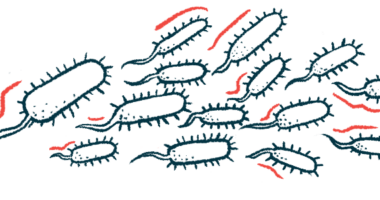Common Painkiller Induces 2 Allergic Reactions in Rare Case Study

A common over-the-counter painkiller induced two allergic reactions — one of them leading to angioedema, and another to skin lesions — in a case study of a 41-year-old man.
The report, “Angioedema and fixed drug eruption simultaneously induced by naproxen sodium: A rare clinical entity,” was published as a letter to the editor in the Journal of Cosmetic Dermatology.
Angioedema, or uncontrolled swelling under the skin, is a common allergic reaction, classified as type I and driven mainly by the activity of immune cells called mast cells.
Fixed drug eruption (FDE) is a less common allergic reaction where well-defined, dark-colored spots appear on certain parts of the skin, most commonly the lips and genitals. While angioedema is considered a type I allergic reaction, FDE is a type IV reaction that is mainly driven by the actions of CD8-positive T-cells.
It is not uncommon for people to experience allergic reactions to medications. However, usually a medication will only trigger one type of reaction in an allergic individual.
“There are only 2 cases in the literature, reporting that a single drug triggers multiple hypersensitivity [allergic] reactions,” the researchers wrote.
In the report, a team of scientists in Turkey described the case of a male patient who experienced sudden swelling after taking a dose of naproxen, an over-the-counter painkiller sold under the brand name Aleve, among others.
Upon clinical examination, the patient was found to have moderate angioedema on the eyelids, lips, and tongue. He also had a number of small, purplish spots on the eyelid and lips, and one larger discolored spot on the glans (“head”) of his penis — suggestive of FDE.
The patient’s medical history was not remarkable, but he recalled a similar reaction (including swelling and spots in the same places) when he had taken naproxen on another occasion three years prior.
The patient was treated with prednisolone, an anti-inflammatory steroid, and the antihistamine desloratadine. His swelling resolved within a few days, and FDE was gone after about a week.
“The current report documented the case of a patient who developed FDE and angioedema simultaneously induced by naproxen … The patient’s clinical presentations indicate the combination of type I and IV hypersensitivity reactions,” the researchers wrote. They noted a need for research into the potential mechanisms underlying this rare combination.







